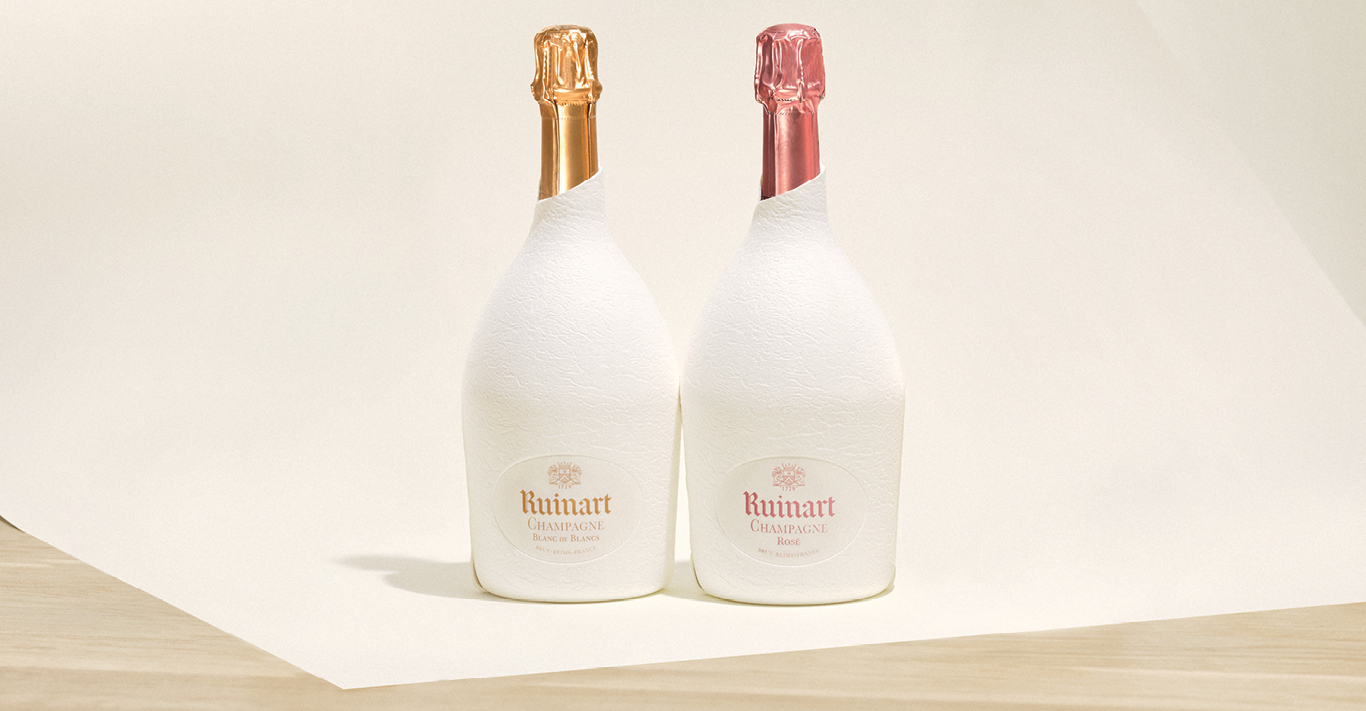WORDS
Jane Fulcher
The Champagne region, and its producers, was the first wine region to assess its carbon footprint, all the way back in 2002. Since then, champagne makers have lead the way in green issues, including reducing waste, recycling and committing to environmental certification. Being champagne, this has always gone hand-in-hand with being a luxury, covetable and indulgent product.
As one of the world’s leading and most innovative champagne houses, Maison Ruinart has long been committed to sustainable practices. As Maison Ruinart cellar master Frédéric Panaiotis says, ‘Climate change is already happening in the vineyards. The Champagne terroir is the source of our wines’ excellence: we have a responsibility to protect and preserve this natural environment’.

Now Ruinart has revolutionised the way it packages its champagne to further advance the Maison’s commitment to being green. The experience of drinking champagne doesn’t start and end with the wine, it’s also about the container, packaging and joy of opening a bottle. Ruinart wanted to find a way to retain the thrill of giving or receiving a bottle of champagne in a beautiful case while making that covering as environmentally friendly as possible.
Second skin is the result of this search, a recycled cloak for each bottle made from 100 per cent natural wood fibres. The second skin elegantly hugs the curves of Ruinart’s iconic champagne bottle with a tactile, textured surface. Ruinart designed the packaging to resemble the chalk walls of the Maison’s crayères, the caves in which its bottled champagne is matured. It also cleverly resembles the way in which a maître d’ will wrap a white cloth napkin around a bottle. Second skin isn’t just aesthetically pleasing, however, it took two years of development to produce a case that would be more sustainable in every way without in any way compromising the final product. The new packaging is made from paper from eco-managed European forests, is nine times lighter than previous gift boxes, and its carbon footprint is 60 per cent lower.

The challenge of making the case from paper is that it lets light in. Ruinart has mixed the paper with metallic oxide to make it completely impermeable to light to avoid compromising the champagne within. It also needed to endure coming into contact with water and being refrigerated. Seven prototypes later, second skin is extremely tough and can even maintain its form after several hours placed in an ice bucket.
As Frédéric Dufour, president of Maison Ruinart says, ‘Innovative, authentic and environmentally conscious, the second skin case crystallises our commitment to sustainability’. And importantly for wine lovers, it also serves to enhance the experience of giving, receiving and drinking a glass of champagne too.
Find out about Ruinart’s collaboration with David Shrigley by clicking here





